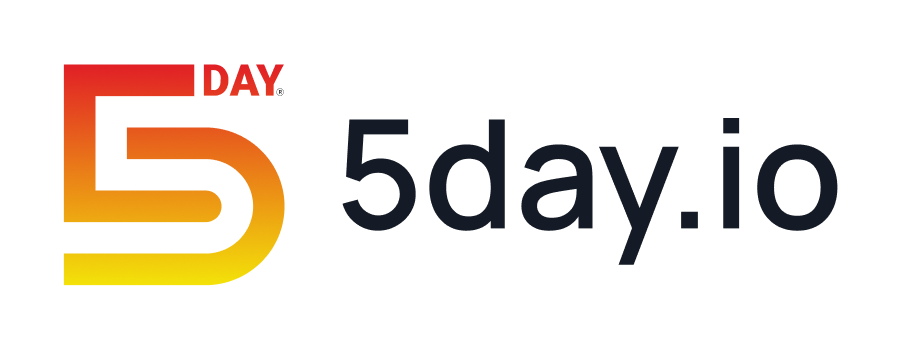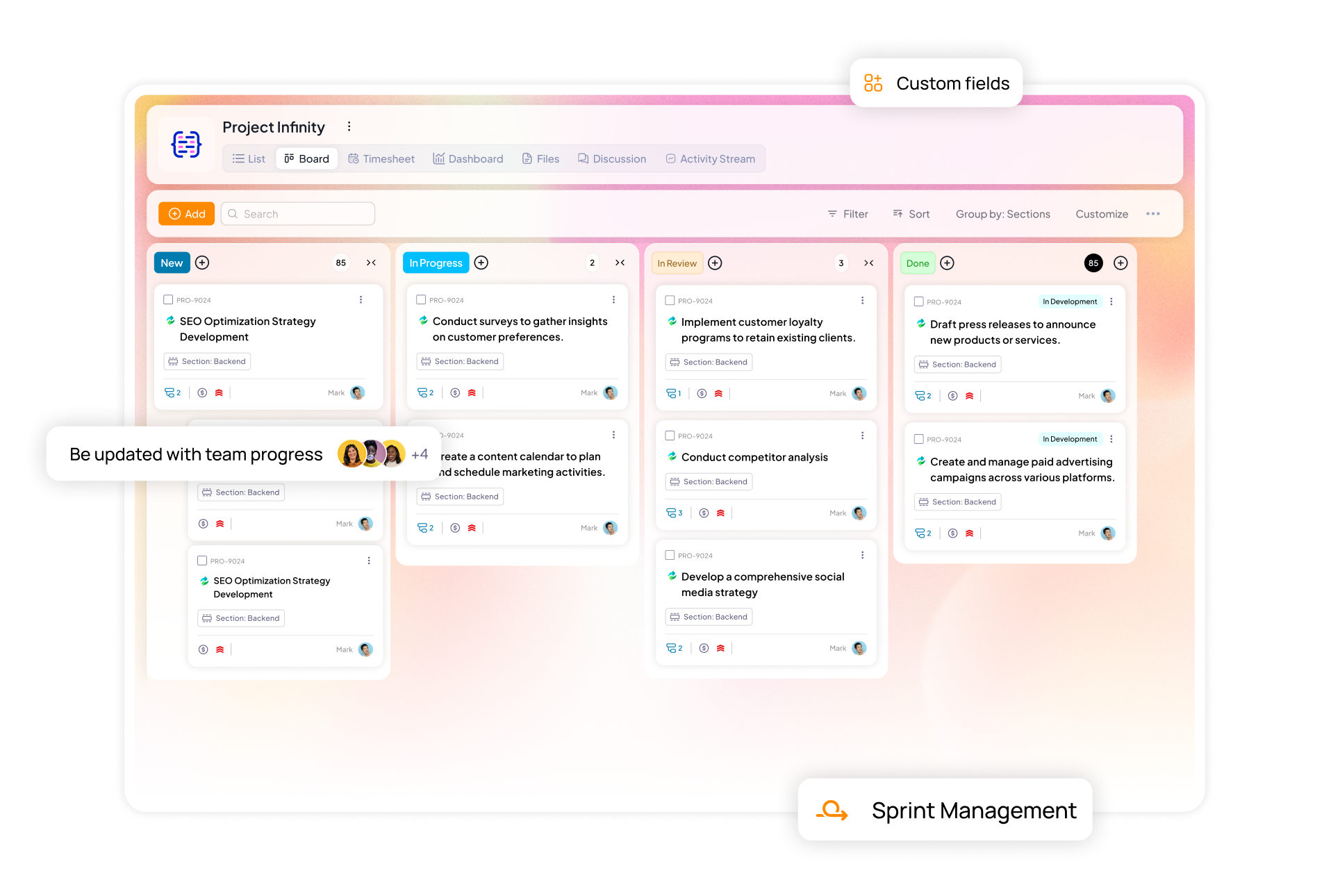The pace at which marketing agencies need handle project deliverables can seldom be matched by a spreadsheet. They feel comfortable, but they weren’t built for dynamic team collaboration.
Yet, according to a 2022 MarTech report, marketing project managers say they spend around 10 or more hours a week on spreadsheets. Does that help them manage their projects better? Let’s find out.
This article is an exploration of whether spreadsheets are actually helpful to your marketing workflow or ditching them is the way to go.
Challenges of spreadsheets: how are spreadsheets failing marketing teams?
Marketing projects today are fast-moving and collaborative. They involve cross-functional teams and clients that need to know what’s going on across the campaign in a minute. At this point, a critical error can derail everything.
And spreadsheets are infamously prone to error. Did you know JPMorgan lost $6 billion in 2012 due to a simple Excel error? This underscores how easily critical campaign data can go wrong. Manual updates and oversight gaps can lead to missed deadlines and “fire drills” to fix mistakes.
Only lord is witness to how many project managers are putting out fires at 10 PM on a Thursday night cursing the agony of working through multiple spreadsheets.

Here’s how most of the marketing teams track projects on spreadsheets:
- One sheet holds the ideation and planning
- Another sheet has timelines
- A third tracks content status
- Yet another one is a “master client tracker” that is stakeholder facing
- Then there’s the budget sheet (with a dozen locked cells and cryptic color codes no one fully understands)
- Oh and let’s not forget the spreadsheet someone created for internal team capacity planning, which was last touched three campaigns ago
This is a ground reality for most marketing teams working on client projects. And then, five active client projects, 12 stakeholders, 4 content creators, and 3 external freelancers later, everyone is relying on this patchwork of disconnected files to make sense of what to do.
A project management software, on the other hand, makes all of this super easy to manage in one single place without chaos.
Let’s see how a project management software compare to a spreadsheet in this regard.
Spreadsheets vs. a project management software: A side-by-side comparison
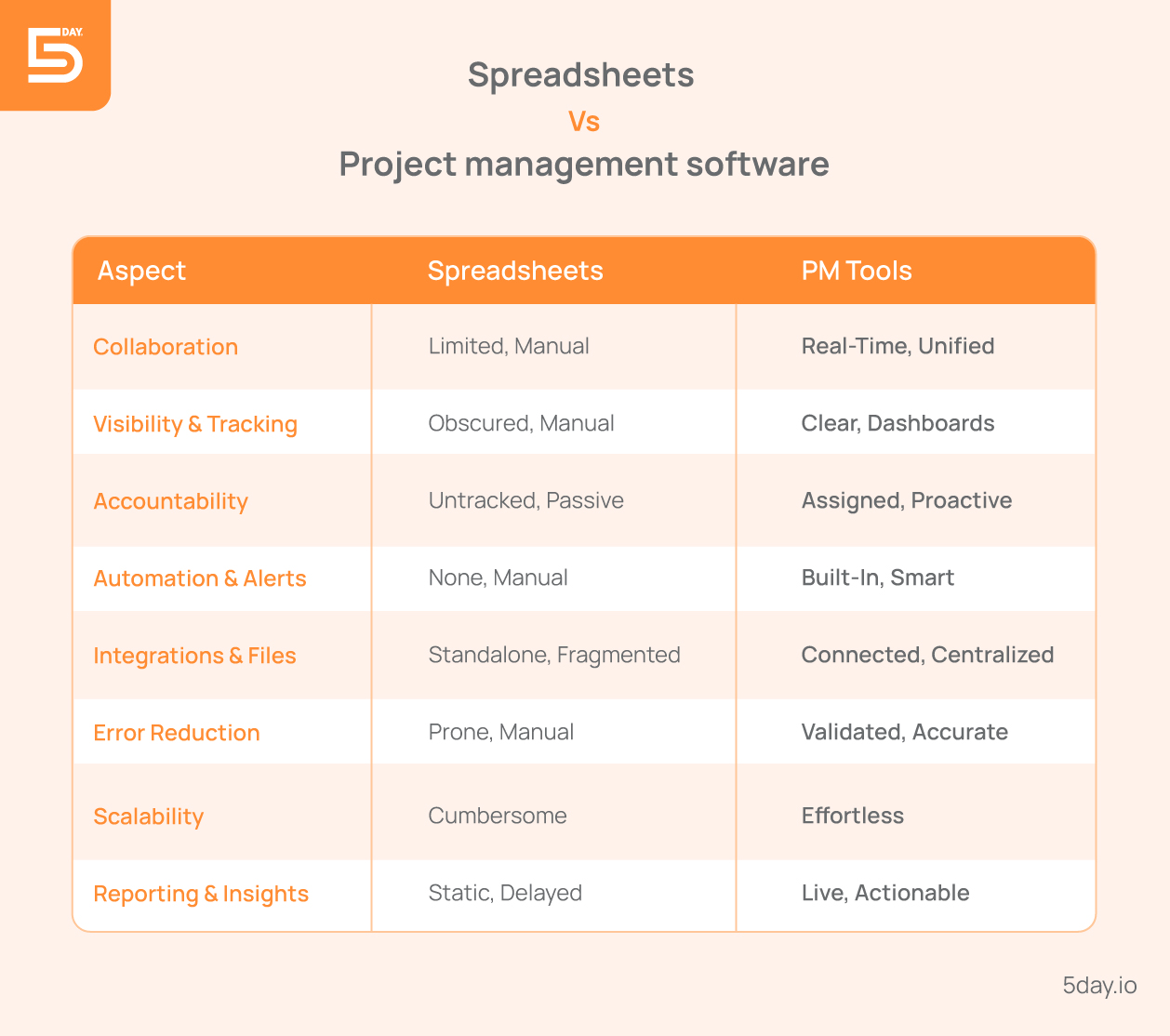
Aspect | Managing Projects with Spreadsheets | Using a Project Management Software |
Collaboration | Limited real-time collaboration. Google Sheets allows simultaneous editing, but lacks advanced features like version control. Conflicts and “who has the latest file?” issues are common. | Designed for multi-user collaboration. Everyone works in one platform with live updates. @Mentions, comments, and edit histories ensure the whole team stays aligned with no extra effort. |
Visibility & Tracking | Hard to get a big-picture view. Tracking status requires manual color-coding or complex formulas. It’s easy to overlook something until it’s too late. | Built-in dashboards and multiple views (list, Kanban board, Gantt timeline, calendar) improve visibility. Managers can instantly see progress, upcoming deadlines, and any overdue tasks. High-level dashboards aggregate all project data for a bird’s-eye view. |
Task Assignment & Accountability | You can list task owners in a cell, but the spreadsheet won’t notify them or enforce deadlines. Following up on who’s doing what becomes an email or meeting game. | Each task is assigned to a specific person with due dates. Reminders and status updates keep everyone accountable. The tool clearly shows who is responsible for each task and flags tasks that are past due dates. |
Automation & Alerts | Virtually no automation (aside from maybe some complex scripting). Everything – status updates, reminders, progress tracking – has to be done manually or via email. | Automation is built in. Repetitive steps (like moving a task to “Done” when completed, or notifying stakeholders when a stage is finished) can happen automatically. PM tools send notifications for upcoming deadlines or when a task status changes, reducing the chance of missed deadlines. |
Integrations & Files | Mostly standalone. Importing data from other tools or sharing data requires manual effort (copy-paste or CSV import). Files like images or docs must be managed separately and linked (at best) via Google Drive links, etc. | Connects with your ecosystem. Good PM platforms integrate with email, calendars, Slack/Teams, CRM, and marketing tools. This means project info flows where it needs to. You can attach files directly to tasks (briefs, assets, etc.), keeping everything in one place. |
Error Reduction | Highly prone to human error – a mistyped number or formula can silently wreak havoc. No error checks for project logic. | Less manual entry means fewer errors. The result is more reliable data for your decision-making. |
Scalability | As projects or team size grow, spreadsheets become bulky and complex. Multiple projects require multiple sheets or massive workbooks, which is hard to maintain. Performance can suffer with lots of data. | Scales with you. Project software is designed to handle multiple projects and users. You can manage dozens of campaigns in one platform without it becoming unwieldy. Adding new team members or projects is straightforward, and the software keeps performance smooth, no matter how much you’re managing. |
Reporting & Insights | Getting summary insights (e.g. How many tasks are overdue across all campaigns?) requires manual counting or advanced formulas/pivot tables. It’s doable, but time-consuming and not real-time. | One-click reports and real-time analytics. You can generate reports on deadlines, time spend, etc. instantly. Many tools have visual charts built in (burn-down charts, budget vs. actual, etc.). This data-driven insight helps marketing managers make informed decisions quickly, rather than operating on gut feel or stale data. |

Market trends forcing the switch from spreadsheets to project management software
Modern agencies aren’t just waking up one day and trashing their spreadsheets. Broader trends in how we work are pushing this shift. Let’s take a look at 3 such shifts.
Remote & hybrid work
Distributed teams and remote work have exploded since 2020. Many marketing agencies now have team members (and clients) spread across cities or time zones.
A Gartner report found that between 2109 and 2021, digital collaboration tools saw a 44% rise. This trend exposes the weakness of spreadsheets. They’re not inherently designed for friction-free online collaboration.
Emailing Excel files back and forth feels archaic in an era when Zoom, Slack, and cloud project management software let everyone work together live.
Need for agility in marketing projects
The growth of agile marketing practices has shifted the focus from set roll-outs to iterative campaign management. This means more frequent updates and shifts in priorities can be seen across industries. Be it B2B SaaS tightening their GTM timeline or D2C companies participating in moment marketing.
Agile thrives on quick adjustments and continuous flow of tasks (think Kanban boards, daily stand-ups). Spreadsheets are static snapshots that require manual refactoring for every little change.
A project management software can help deprioritize tasks, update the team in a go, and track who made what changes easily.
Clients expect transparency & accountability
Agency clients today are more involved and data-driven. Clients expect to see what’s going on with their campaigns in real time and not just at monthly meetings.
This means agencies need to provide regular updates, clear status tracking, and honest communication about roadblocks. It’s hard to do this with static spreadsheets that live internally.
Modern project management tools can offer client access. By giving clients a window into the project, agencies demonstrate accountability and start a long-term trust building initiative.
New tech, new benefits: Why a marketing project management software can benefit your agency
One big reason marketing teams are excited about switching to project management platforms is the wave of new technology and features these tools offer. It helps them actively boost productivity and intelligence in project workflows. Let’s see how.
AI-powered insights & scheduling
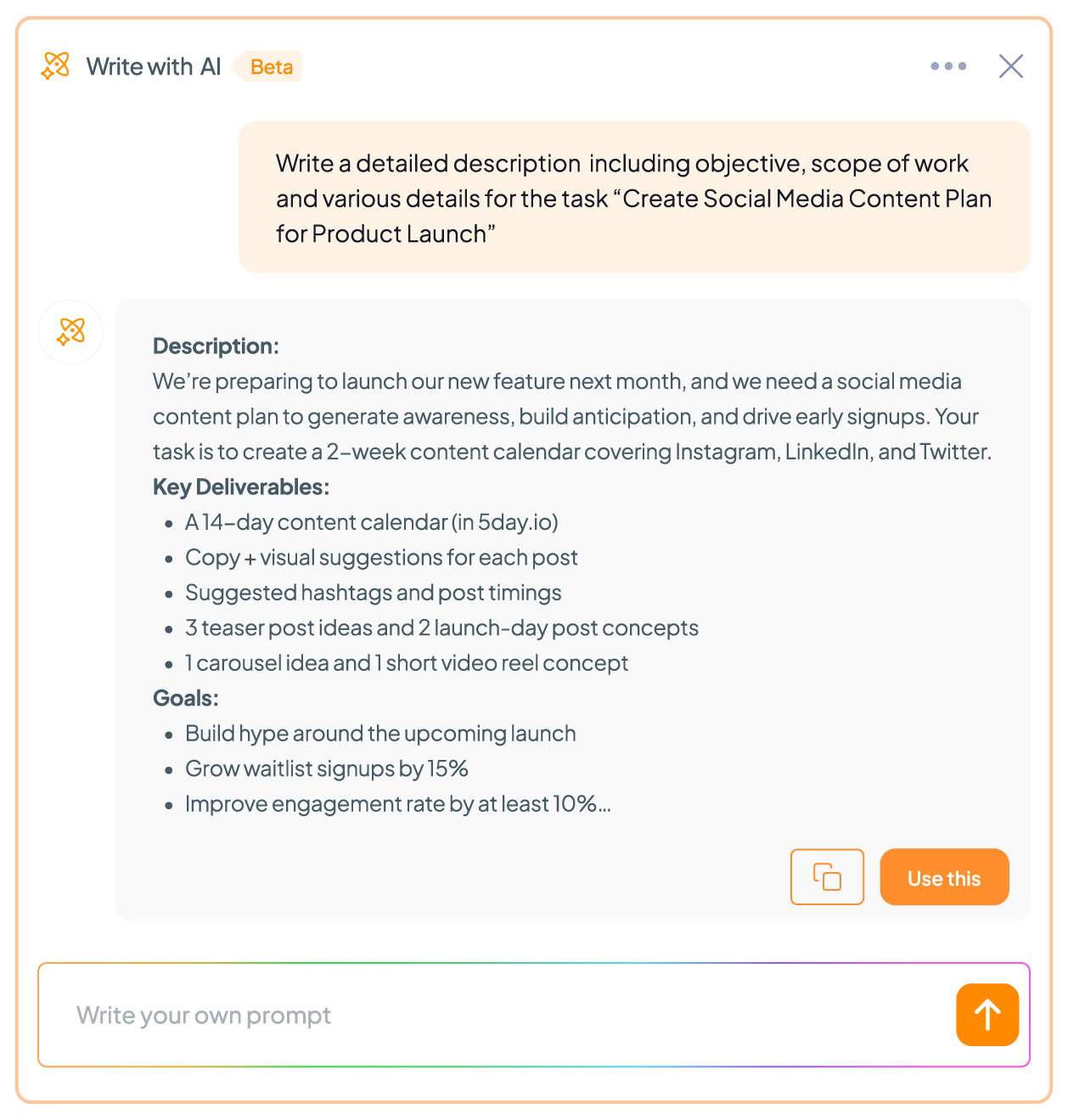
For marketing teams, AI can assist with content creation tasks.
Imagine an AI that lives inside your project tool. It could draft a summary of a campaign report or suggest social copy based on a creative brief.
In fact, teams are already leveraging AI in PM software to create task summaries or write content without leaving the platform. This reduces the copy-paste between docs and project trackers. Spreadsheets certainly can’t do that.
Workflow automation
Marketing teams often have standard processes. For example: After a blog draft is written, notify the editor for review.
Automation handles these handoffs without you putting in the effort. The impact? Less chasing and nagging. That’s time saved and deadlines met, thanks to the software taking on the “traffic cop” role.
Templates & standardization
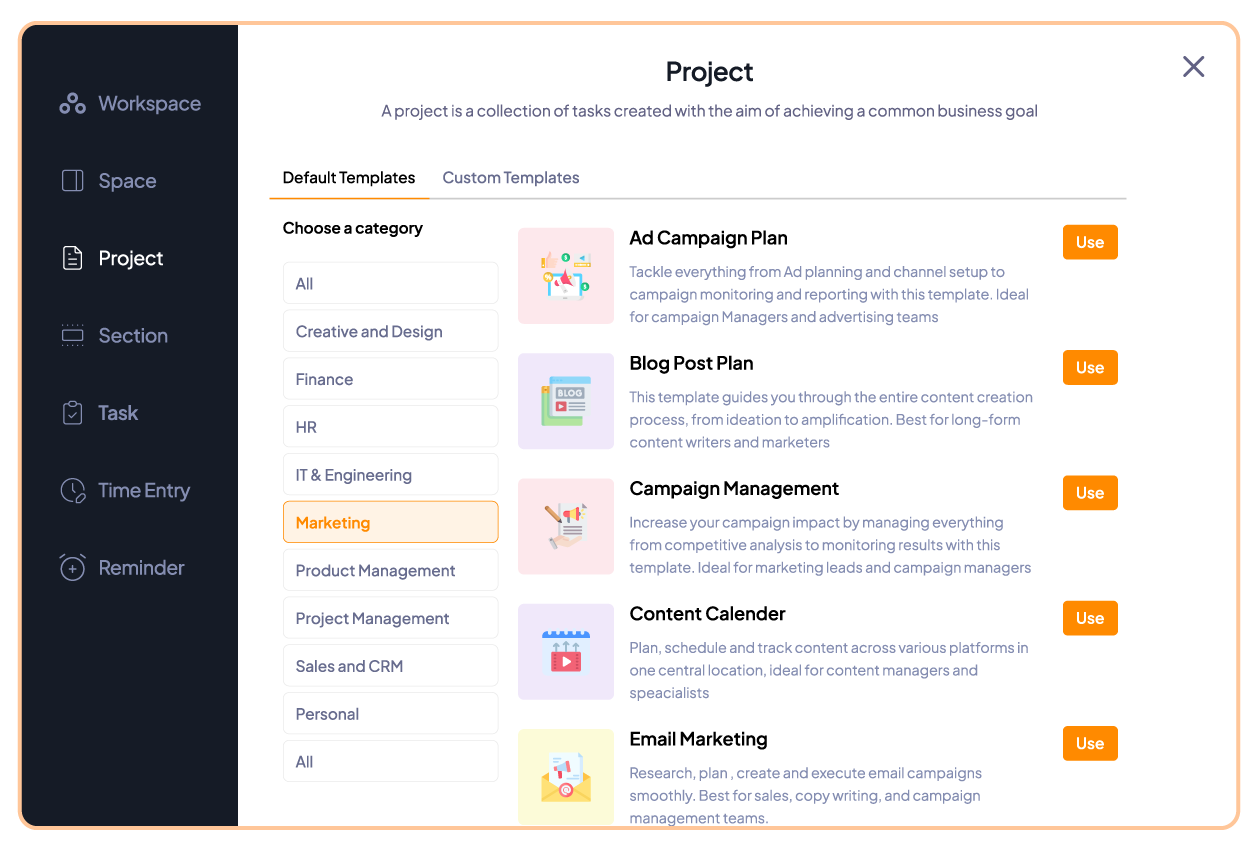
Unlike starting from a blank Excel sheet each time, project management software comes with templates for common project types. For marketing teams, this is gold.
Planning an editorial calendar? There’s likely a template for content scheduling. Many platforms, including 5day.io, offer templates specifically for marketing use cases. This saves you the setup time and ensures you’re not forgetting any key steps.
You can also create standardized template processes across your team and for different clients to generate more predictable outcomes.
Analytics and dashboard
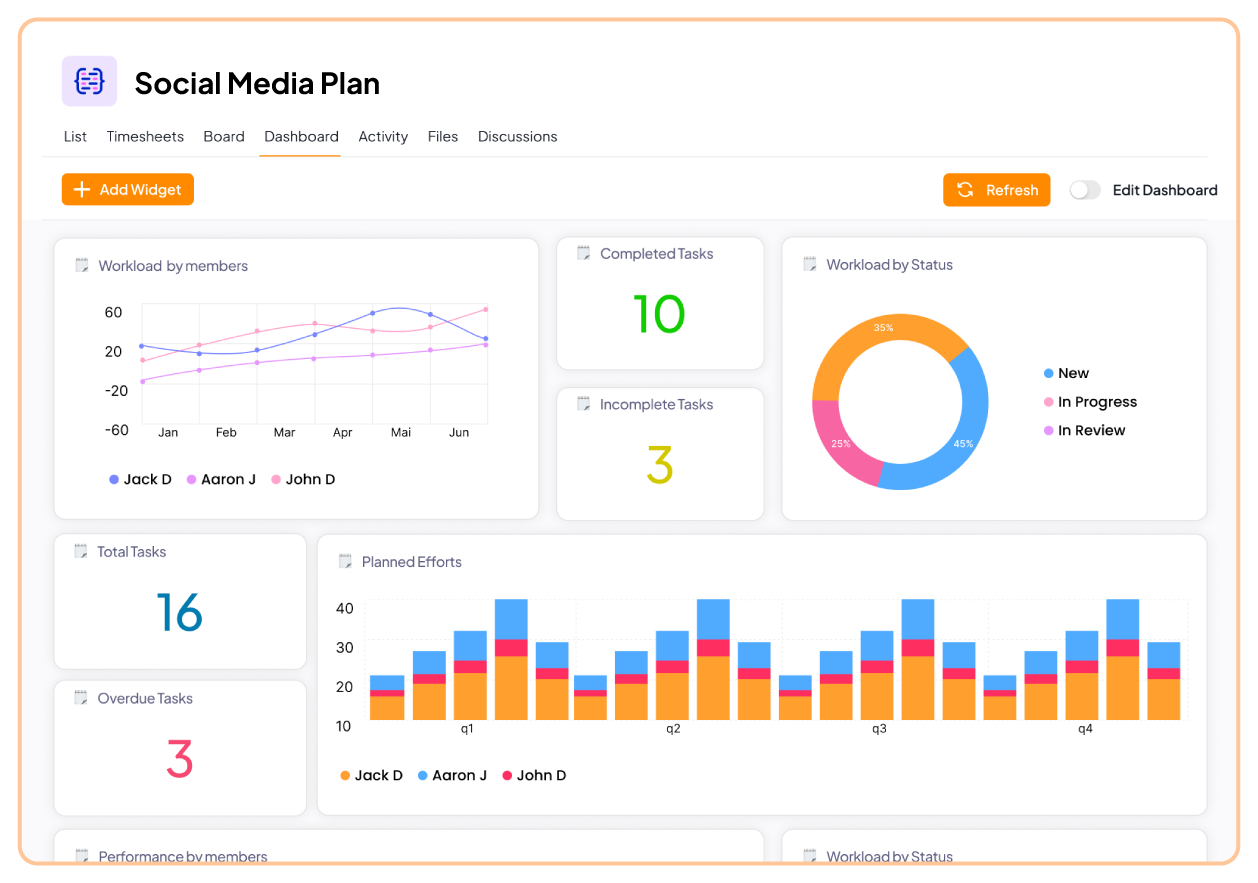
We touched on reporting in the comparison, but it’s worth noting how far analytics have come in project management software.
It excels at centralizing critical project data in one view, overdue items, in-progress tasks, priorities, owners, and workload status. So, teams always know what’s happening, who’s responsible, and where the risks are.
It’s a smarter, faster way to stay on top of active projects without having to dig through a spreadsheet or chase updates.
Security, mobile access, and permissions
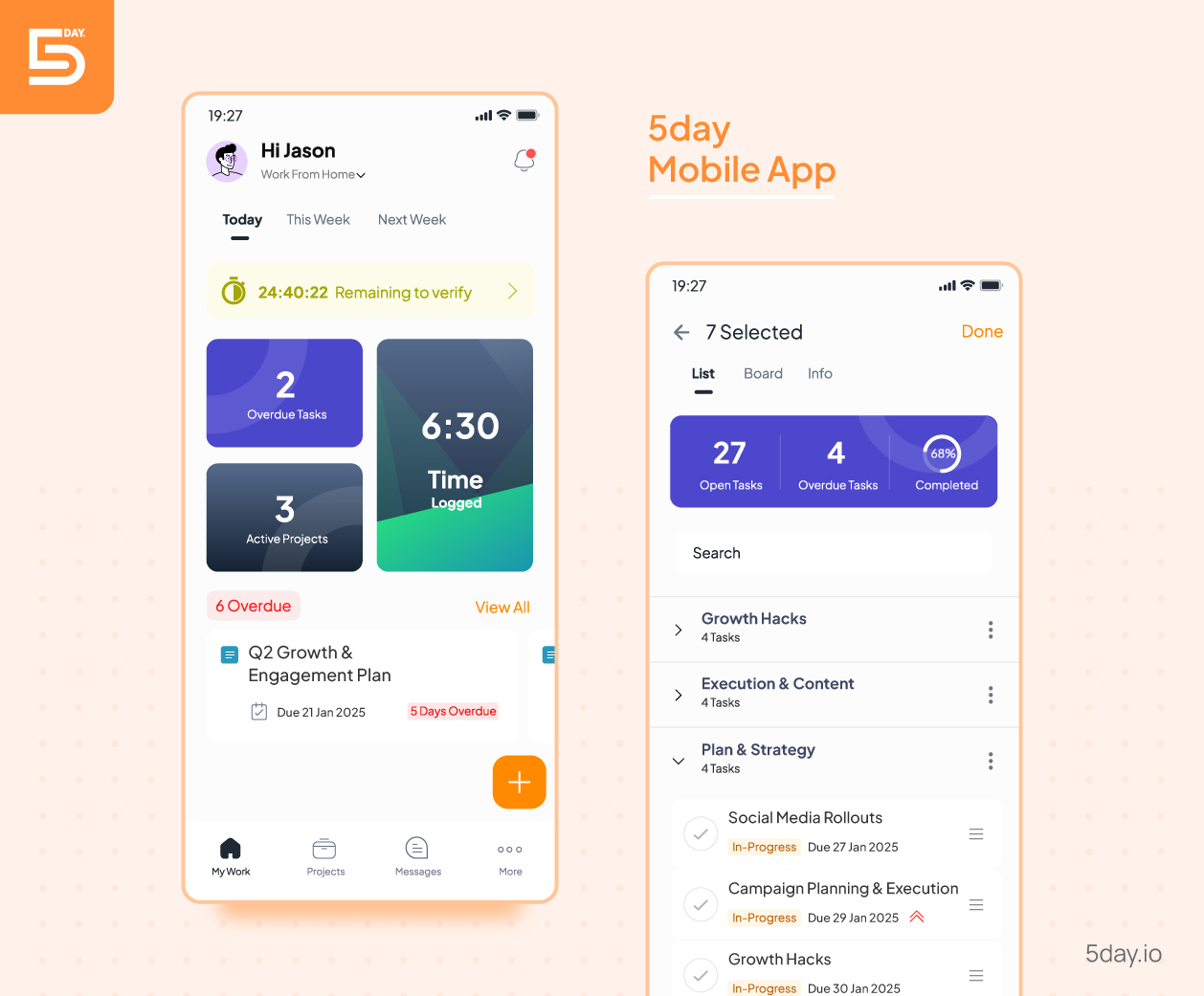
With great power (all this centralized project data) comes great responsibility.
Another advantage of professional tools is robust permission controls. In an agency setting, maybe you want clients to only see certain views, or junior team members to edit status but no other tasks.
Spreadsheets offer only rudimentary protections (passwords, hidden sheets that savvy users can still find). A project management software lets admins fine-tune who can view or edit what.
This means you can confidently open up parts of the project system to clients or execs without worrying someone will accidentally delete a formula or see info they shouldn’t.
Ready to select a marketing project management software for your team? Compare the top 5 tools available in the market.
How to successfully switch from spreadsheets to a marketing project management software
- Audit your current spreadsheet workflow
- Get buy-in and overcome resistance
- Evaluate and choose the right PM tool
- Pilot with a single team/project
- Train and onboard your team
- Migrate data and archive old files
- Set usage norms and new workflows
- Monitor usage and refine
- Measure success and celebrate wins
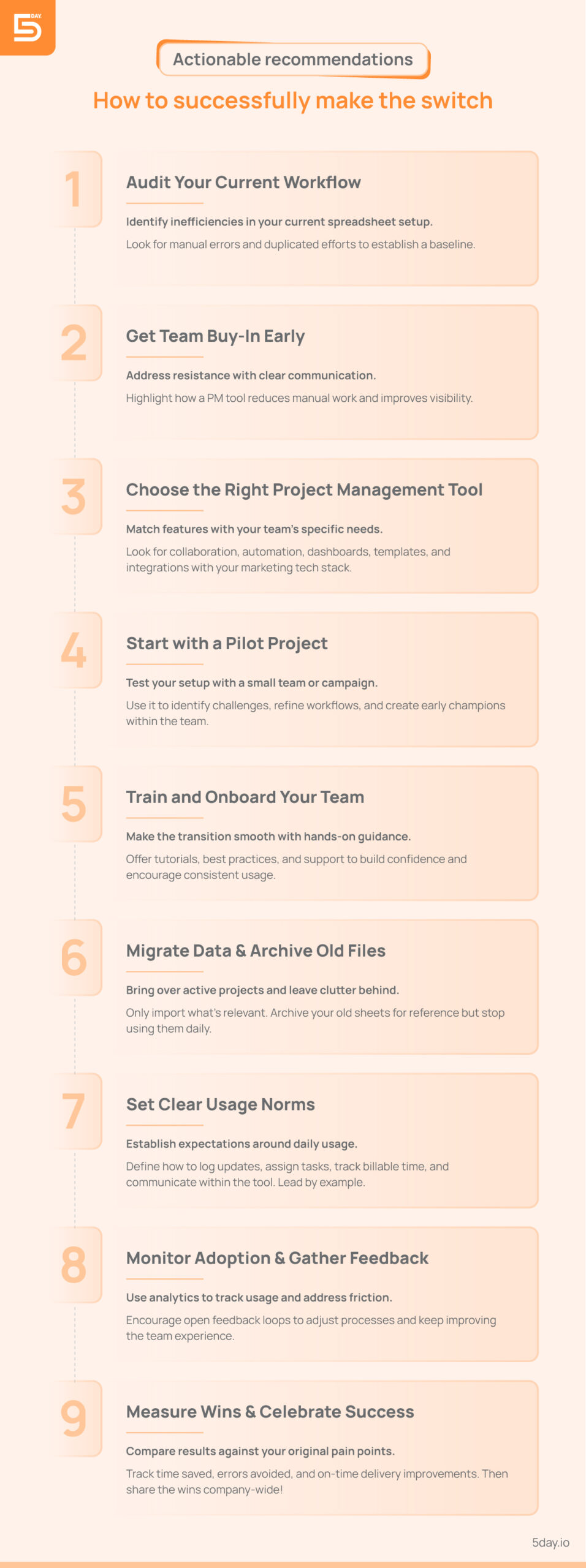
Be A future-ready marketing team (without spreadsheets) with 5day.io
Upgrading from spreadsheets to a modern project management platform is about evolving the way your team works for the better.
It’s about freeing your talent to focus on creativity and strategy, not clerical upkeep. And critically, it’s about building a collaborative, agile team culture that can respond to change quickly and transparently, which is a competitive advantage in itself.
5day.io is a marketing project management software designed to be simple yet powerful. Your team can get up and run quickly, without steep learning curves, and start seeing immediate improvements in how work flows across departments.
It’s time to retire those unwieldy marketing spreadsheets and graduate to a project management software that propels your team forward. The risks of staying with the old ways far outweigh the momentary effort it takes to make a change.
If you are ready for the future, try 5day.io now. It is completely free for 3 months. No credit card needed.
